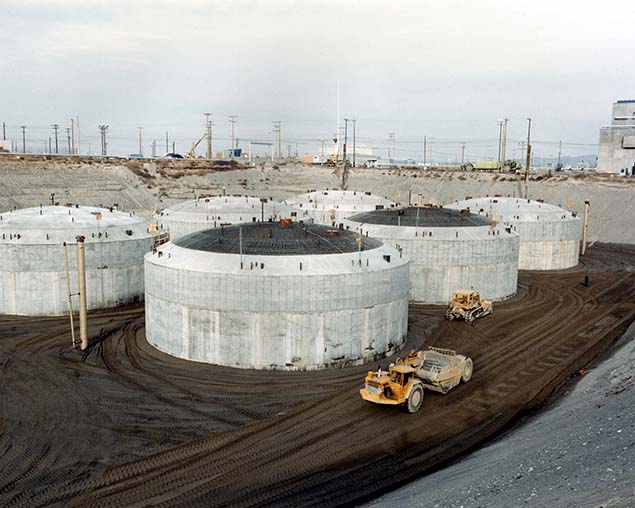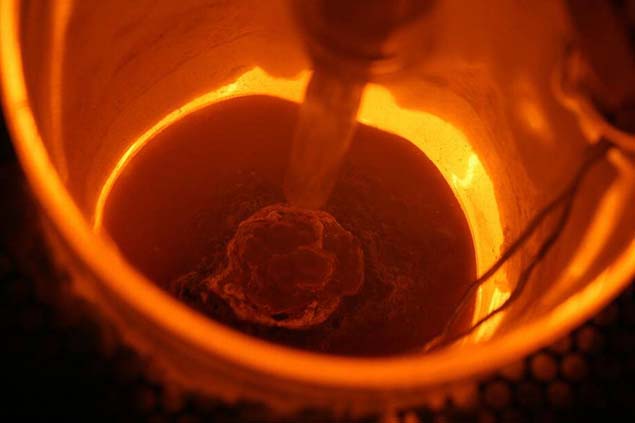Reinterpreting high-level nuclear waste
A federal proposal could mean significant changes in how Hanford tank waste is treated.
The U.S. Department of Energy has adopted a new interpretation of “high-level waste” that gives the agency unilateral authority to determine what constitutes high-level nuclear waste. This decision could have far-reaching consequences for how the waste in Hanford’s 177 underground tanks — currently classified as high-level waste — is treated and disposed of. In particular, it could mean that the federal Energy department would propose to leave millions more gallons of waste in the tanks, rather than removing it and incorporating it in glass as currently planned.
Defining high-level
Federal law – 33 USCS §1402 (j) – defines high-level waste as the irradiated fuel from a nuclear reactor and the waste generated when that fuel is processed to extract other products. Federal laws further require high-level nuclear waste be treated to make it stable and then disposed of in a deep geologic repository.
What’s in the tanks
Hanford’s single-minded mission was to make plutonium for atomic bombs. Over nearly five decades, the site produced two-thirds of the nation’s plutonium. Its nine reactors irradiated uranium, and its various processing facilities used a succession of toxic chemicals to extract the small amounts of plutonium produced during the irradiation. In all, more than 100,000 tons of uranium were processed to make about 75 tons of plutonium. Virtually everything that wasn’t plutonium remains on site. This includes the millions of gallons of chemicals used to extract pounds of plutonium from tons of irradiated uranium.
Those radionuclide-laced chemicals went into Hanford’s 177 huge underground tanks. Every gallon of that waste currently is classified as high-level.
Redefining high-level
The federal Energy department has adopted its proposal to reinterpret the term "high-level waste" and base the definition on the level of radioactivity in the waste, rather than how the waste was generated.Old news in a new package
Up to 90 percent of Hanford’s tank waste could be reinterpreted as low-level under this new interpretation. But that’s already been done at Hanford. Nearly 20 years ago, the federal Energy department, federal Nuclear Regulatory Commission and Hanford regulators agreed to let 90 percent of the tank waste be treated as though it was low-level – referred to at Hanford as “low-activity.” However, under this agreement the waste could only be treated as low activity if it is incorporated into glass, which will keep its toxic and radioactive constituents encapsulated and stable for thousands of years.A lower standard for low-level?
Since Energy is already treating 90 percent of the tank waste as if it were low-level, it would appear that the primary motivation to reinterpret that waste is to avoid its commitments to glassify much of the waste. Declaring most of the tank waste as low-level opens the door to treatment methods other than glass encapsulation. The most likely choice would be concrete. Energy already has discussed the possibility of leaving waste in dozens of the tanks and filling them with concrete rather than pumping the waste out. It also is considering removing some of the tank waste and mixing it with concrete rather than glass.
Concrete is not “as good as glass”
Washington state has remained open to alternative treatments for Hanford waste, but we have always insisted that any treatment for disposal at Hanford be at least as good and effective as glass. So far, no alternatives have met that test, and concrete falls well short. It is porous and — relative to radioactive contaminants — short-lived. Large quantities of waste left in tanks, even if it is topped with concrete, eventually would leak out, seep through the soil into the groundwater, and from there into the Columbia River. That is not an acceptable outcome to the state.
Contact information
Ryan Miller
Communications Manager
Ryan.Miller@ecy.wa.gov
509-537-2228



